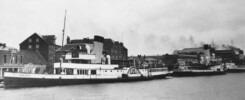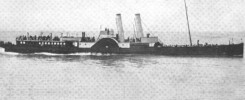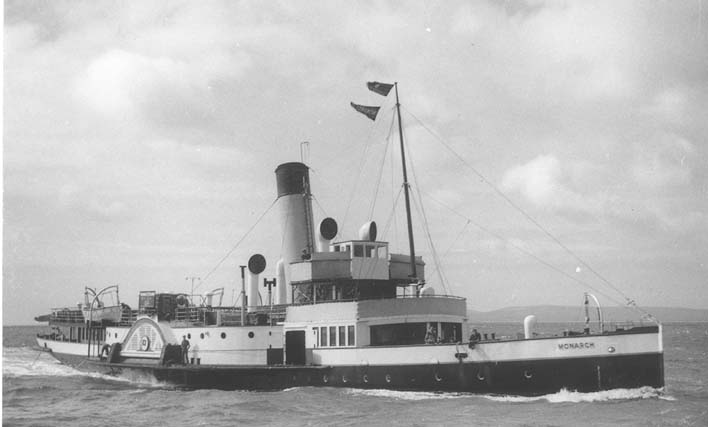
In 1960 there were still eleven paddle steamers offering trips along the South Coast of England between Hastings in the east and Plymouth in the west. With the exception of the Compton Castle, Totnes Castle and Kingswear Castle on the River Dart, which had small crews of just four and a very economical consumption of coal of less than half a ton a day, the others were larger ships with larger crews, larger fuel bills and larger costs full stop.
Keeping them solvent was not easy and was very dependent on packing in the maximum revenue during the peak holiday weeks from the middle of July to the end of August when the business was there and not blowing any of it by running the steamers at times when the revenue could not keep pace with the direct operating costs. This meant that the season for each of these larger steamers was comparatively short in 1960. Then, unlike today, there was no business as September wore on, although this varied a little by location, and, just like today, not a lot in the early season either.
Let’s have a look in more detail.
First to finish was Cosens’s Monarch (pictured above) which made her last run from Swanage to Bournemouth and on to Poole on Thursday September 8th.
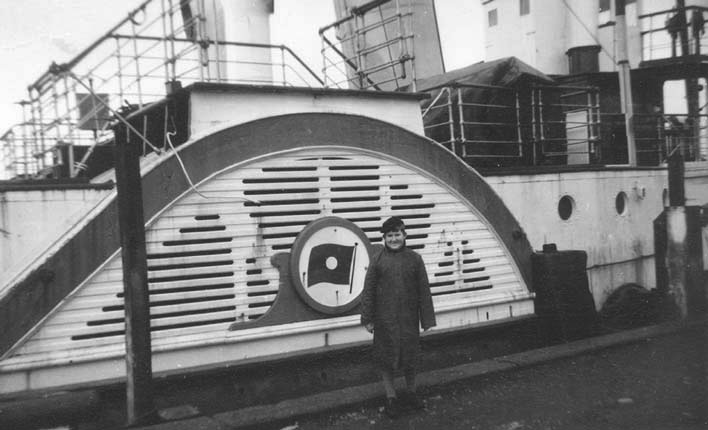
Monarch had started her season running from Swanage and Bournemouth on Tuesday May 31st with a schedule to Totland Bay or Yarmouth, Isle of Wight on four days a week and on the Bournemouth/Swanage service on the other three. With the exception of three appearances by the Consul, up from Weymouth, the Monarch held the fort at Bournemouth on her own throughout June until she was joined by the Embassy in early July as the peak weeks took off. All in all that amounted to a scheduled season for the Monarch of just 96 operating days in 1960.

Newly purchased from British Railways she had arrived at Newhaven on 10th June to start a programme of short trips from Brighton, Eastbourne and Hastings with a once a week day trip on Fridays to Shanklin on the Isle of Wight. Her summer was beset with problems and a report in the Eastbourne Gazette suggests that she had still to make a start by June 18th. How many days she actually sailed I don’t know but with her later start and many troubles it must have been less than the Monarch’s 96.
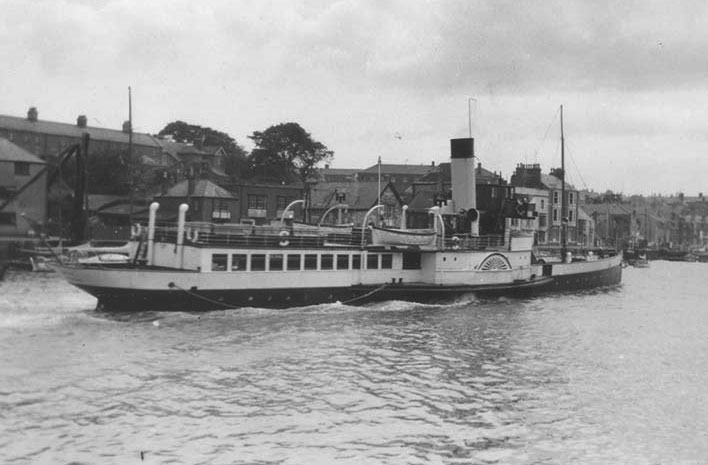
Consul had started her 1960 season on Saturday June 4th with a programme running morning, afternoon and evening cruises from Weymouth round Portland Harbour, to Lulworth Cove, or to the Shambles Lightship or towards Portland Bill on 83 days, to Swanage and Bournemouth on 17 days and to Swanage and Totland Bay, Isle of Wight on a further 4 days giving a total of 104 scheduled operating days.
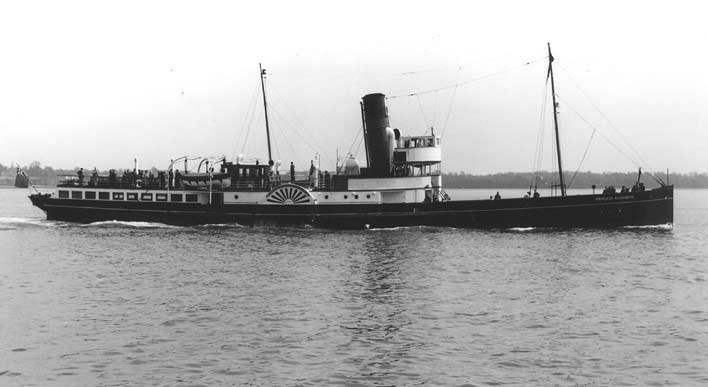
She had arrived in Torquay on Friday 6th May, newly purchased from Red Funnel of Southampton, for a new service running morning, afternoon and evening trips along the coast to Sidmouth and Dartmouth as well as a selection of day trips to Plymouth or Lyme Regis. Her first excursion with passengers was on Tuesday 17th May but she did not sail again that week and started her season proper on Sunday 22nd May. With various cancellations for weather and breakdowns, her engine room log records her sailing on 99 passenger carrying days during 1960.
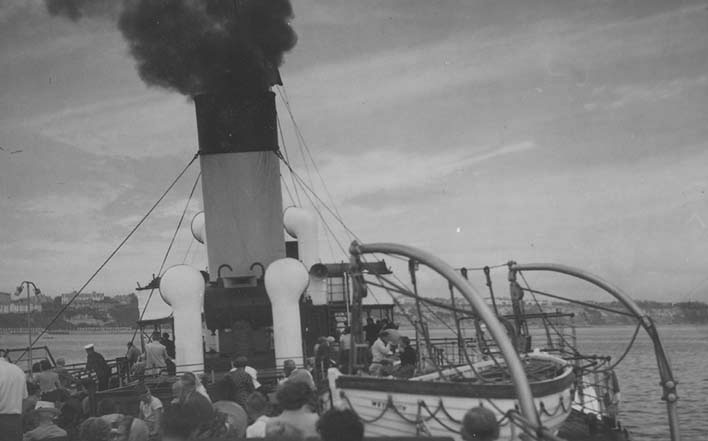
She had not started until Sunday July 3rd after which she spent the peak season running six days a week from Bournemouth to either Totland Bay or Yarmouth, Isle of Wight morning and afternoon with some extensions to Swanage and alternate Saturdays on the Swanage service. After the Monarch had finished on September 8th she took over the Bournemouth/Swanage service on two days a week running to the Isle of Wight on four others and having Saturdays off. All in all, that gave her a scheduled season of just 79 operating days.
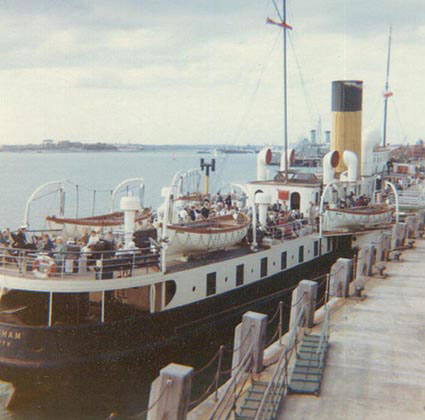
Now we come to the three railway paddlers at Portsmouth. It is harder to be precise about the number of days which they ran in 1960 as none of the schedules mention the steamers by name. However, we do know that, by then, they ran hardly any excursions and were seen by their owners as relief ships and people movers on the Portsmouth/Southsea to Ryde ferry services at times of high demand. The largest and most expensive to operate, the Whippingham (pictured above), saw the least service of all, coming into her own only when her huge capacity on a Board of Trade Class IV certificate of 1,183 could really help to shift the queues at Portsmouth and Ryde on peak summer Saturdays. By mid September her short season was over and she was laid up on the buoys in Portsmouth Harbour.
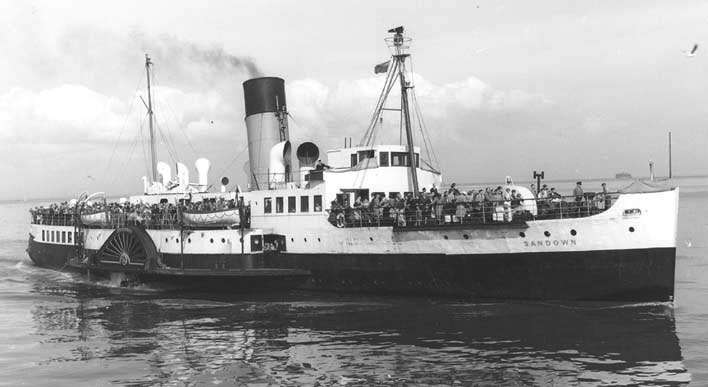
As well as filling in on the Portsmouth to Ryde ferry as required during the summer the Sandown (pictured above) and her sister the Ryde were much associated with the peak week Southsea to Ryde service sailing backwards and forwards, backwards and forwards every day. The Sandown was the first of the two to finish and was in Newhaven for lay-up by early October leaving…
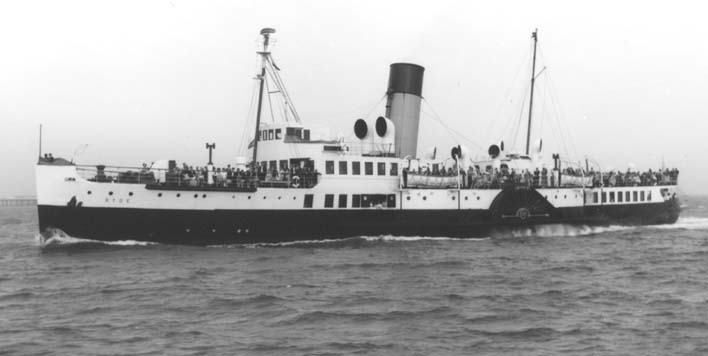
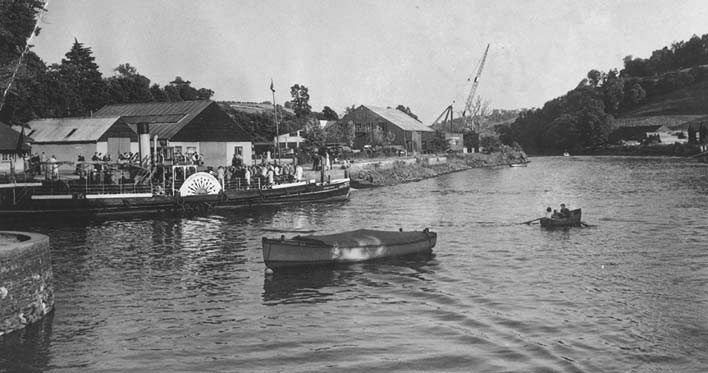
Not surprisingly the longest season of all the purely excursion South Coast paddle steamers in 1960 was given by the smallest and most economical, Compton Castle, Totnes Castle and Kingswear Castle sailing up and down the River Dart between Dartmouth and Totnes. Their main schedule started in the first week of May and went on to the last weekend in September for 146 operating days although not all of the three paddlers sailed every day.
Looking back, with the exception of the Dart steamers and the railway ferry services from Portsmouth, of the other South Coast paddlers in 1960 only the Consul topped more than 100 scheduled sailing days. And that is scheduled sailing days. We can’t be sure exactly how many of those were lost to weather although Cosens’s accounts for the year ending December 31st 1960 do state “The Company’s steamer services were again adversely affected by the exceptionally bad weather experienced during the summer which contributed to the reduction in the overall Trading Profit” without going into detail, as they sometimes did, of the actual number of days lost.
However, you don’t have to take many blank days off the Embassy’s scheduled 79 before you start to have a very meagre season indeed. Small wonder that Cosens were ever parsimonious and jealously guarded the keys to their expenditure.
As an example of this, the Monarch was late leaving Poole on Friday September 9th and missed the tide for getting through the Weymouth Town Bridge to her lay-up berth in the Backwater. That didn’t stop Cosens paying off the deck and catering crew that afternoon as planned. They weren’t going to eat into any surplus the Monarch had made of income over expenditure during her brief season and fork out for another day of wages. The following morning the Monarch steamed through the Town Bridge with a deck crew temporarily borrowed from the Consul.
That ruthless determination to screw down costs at every turn and not to run their steamers when the revenue would not cover the operating costs were features of Cosens’s management and this attention to financial control enabled them to keep large, elderly, excursion paddle steamers going longer than most.
Kingswear Castle returned to service in 2023 after the first part of a major rebuild which is designed to set her up for the next 25 years running on the River Dart. The Paddle Steamer Kingswear Castle Trust is now fund raising for the second phase of the rebuild. You can read more about the rebuilds and how you can help if you can here.
John Megoran

